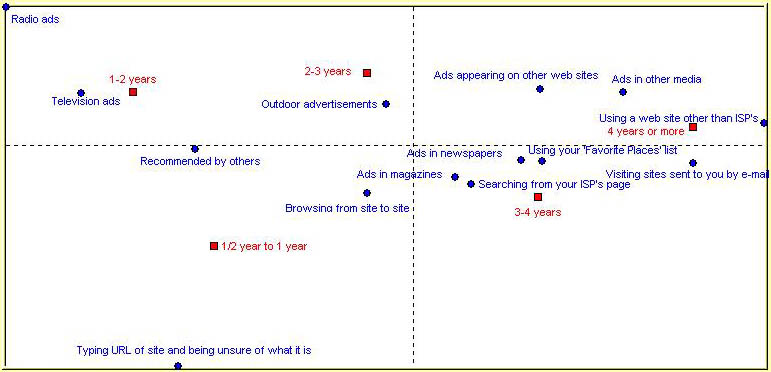
Sources of Information
about Websites
The total number of websites that are available on the World Wide Web is not known with any precise certainty. What is for certain is that this number is of an order of magnitude such that it is unlikely that someone can visit all of them within some reasonable timeframe. Websites are interested in attracting visitors, although some websites are interested in procuring mass audiences while others prefer to have targeted users. In any case, the fact is that people cannot come to a website unless they are aware of its existence or are otherwise directed.
There are many ways to communicate the existence of a website to potential visitors. Here is a list of some options:
Now one chooses a particular mode of communication not just because it is there, but because it is effective in terms of costs and results. This requires the knowledge of how people go about finding websites, and then matching to those habits. We will now cite some survey data from the TGI.net Latina study. This study was conducted with 6,563 persons who had used the Internet in the preceding 3 months in Argentina, Brazil, Chile, Colombia and Mexico. The chart below shows the ways by which people said that they found out about websites.
At the top of the list is 'recommendations by others.' This is a reaffirmation of the effectiveness of viral marketing. Unfortunately, one cannot just go to a media central and purchase a certain number of 'recommendations.' Viral marketing works with a quality product that is communicated to influential people who are situated in the nexus of the information network.

As with any marketing applications, we ask whether it is possible to segment the internet users based upon their ways of obtaining information about websites. Among the various possible segmentation scheme, we will discuss one that is simply based upon the experience of the Internet user. The following chart is a correspondence analysis map of the number of years of Internet usage versus the ways by which people find out about Internet websites.
To the left of the map, we have the least experienced user who are influenced by electronic media advertising, the recommendations of others and also uses simple trial-and-error. To the right of the map, we have the most experienced users who are now adept at using advanced web resources (other than the home page of their Internet service providers) such as specialized search engines and have probably signed themselves up on specialized mailling lists. If we believe the opinion influencers on the web to likely be experienced users, this points out that a niche website must seek out the key resources in that particular niche and present a convincing case of the desirability of this niche website.

(posted by Roland Soong, 3/19/2001)
(Return to Zona Latina's Home Page)